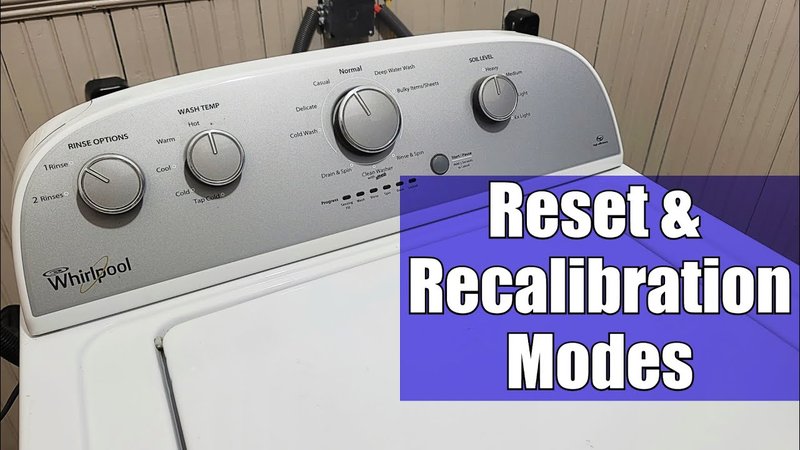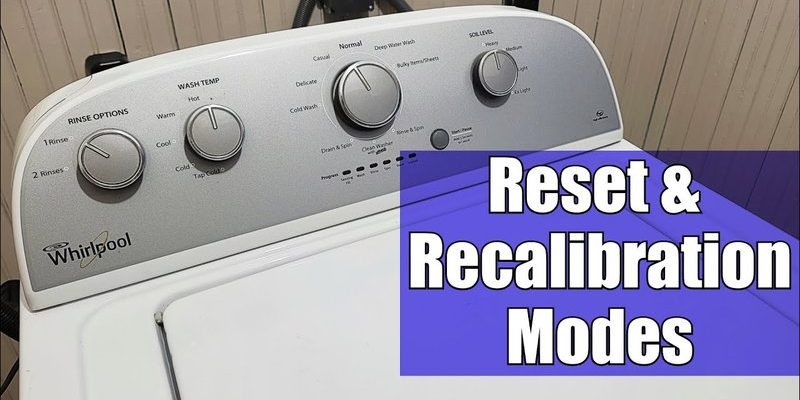
Here’s the scoop: when your washing machine shows an OE error, it’s essentially telling you there’s a drainage problem. Water may not be exiting the machine as it should, which can leave your clothes soaked and your nerves frayed. This can happen due to a blocked hose, a kink in the drainage line, or a malfunctioning drain pump. But don’t worry—by following a systematic approach, not only can you clear the error, but you can also potentially prevent future occurrences. So, let’s explore how to tackle this problem in a way that’s as painless as possible.
Understanding the OE Error Code
Before jumping into solutions, it’s essential to understand what the OE error code actually signifies. OE stands for “Overflow Error,” which might sound intimidating, but it simply points to an issue in the water drainage process. Think of your washing machine as a well-oiled machine (literally), where every part must function in harmony. When the water doesn’t drain, it’s like a traffic jam on a busy road—everything comes to a sudden halt.
Typically, the OE error can be caused by a few different factors. The most common reason is a blocked drain hose or pump filter. Just like how a straw won’t work properly if there’s a piece of paper stuck in it, your washing machine can’t drain if something obstructs the pathway of the water. Another culprit could be a faulty drain pump, which is like having a broken gear in a clock; nothing moves the way it should without it. Sometimes, even the smallest items like a coin or a sock can sneak their way into places they shouldn’t be, causing a blockage or malfunction.
Understanding these underlying causes not only helps in addressing the immediate issue but also aids in preventing similar problems down the line. By maintaining your washing machine regularly—checking hoses, cleaning filters, and ensuring nothing blocks the pump—you can keep it running smoothly for years to come. So, let’s dive into the practical steps you can take to reset your Whirlpool washing machine and fix the OE error.
Step-by-Step Guide to Resetting Your Washing Machine
Resetting your Whirlpool washing machine isn’t as daunting as it sounds. It’s somewhat like rebooting your computer when it freezes—refreshing the system often does wonders. The first thing you need to do is turn off your washing machine completely. Unplug it from the power source to ensure it’s fully off. This might seem trivial, but it’s a crucial first step in resetting the system.
After you’ve done this, let the machine sit unplugged for about a minute or two. This pause allows the machine’s internal systems to reset. Think of it as giving your washing machine a moment to catch its breath. While you wait, you can check the drain hose for any obvious clogs or kinks. If you spot any, gently straighten them out or remove the debris. Imagine it like untangling a garden hose; you want to ensure the water flows freely without any interruptions.
Once you’ve done that, plug the machine back in and turn it on. Try running a small rinse and spin cycle to check if the issue is resolved. If the error code disappears, congratulations—you’ve successfully fixed the problem! If it persists, don’t worry; it might be time to inspect the drain pump filter or, in some cases, seek professional assistance.
Troubleshooting the Drain Pump and Hose
If resetting the machine didn’t solve the issue, the next step is to inspect the drain pump and hose more thoroughly. Just like a detective investigating a case, you need to dig a little deeper to find the root of the problem. Start by locating the drain pump filter, usually found at the bottom of the washing machine. It catches any foreign objects that might have missed your pockets. Open the filter carefully and check for any debris or blockages.
Once the filter is clear, move on to checking the drain hose. Ensure it’s not kinked or blocked. It’s similar to ensuring a garden hose is straightened out before watering your plants—no kinks mean a smoother flow. If you’ve removed any blockages and straightened any kinks and the problem still persists, there might be an issue with the drain pump itself.
In this scenario, the drain pump may need to be replaced, as it could be malfunctioning. This is usually identifiable if you hear a humming noise but notice that water is not draining. At this point, it might be beneficial to consult with a professional or Whirlpool service technician to avoid causing further damage.
Preventive Measures to Keep Your Washing Machine Running Smoothly
Once you’ve successfully reset your washing machine and resolved the OE error, you might wonder how to prevent this problem from happening again. Much like maintaining a car with regular oil changes and check-ups, your washing machine can benefit from regular upkeep too. Start with checking and cleaning the drain pump filter every few months. This is especially important if you notice small items like coins or buttons in your pockets as they have a knack for sneaking into the washing machine.
Another good practice is to ensure your washing machine is level. An uneven machine can lead to vibrations and movement, which may cause hoses to kink or connections to loosen over time. Think of your washing machine as a dancer who needs a steady floor to perform its best moves. By keeping it level and steady, you help it function optimally.
Finally, be mindful of the type and amount of detergent you use. Excessive detergent can create too many suds, leading to drainage issues. It’s similar to pouring too much soap into a bubble bath; more isn’t always better. Using the right amount, as recommended in your machine’s manual, helps keep everything running smoothly.
By incorporating these preventive steps into your routine, you can avoid future errors and enjoy hassle-free laundry days. Plus, you’ll extend the life of your machine, saving you money and stress in the long run.
